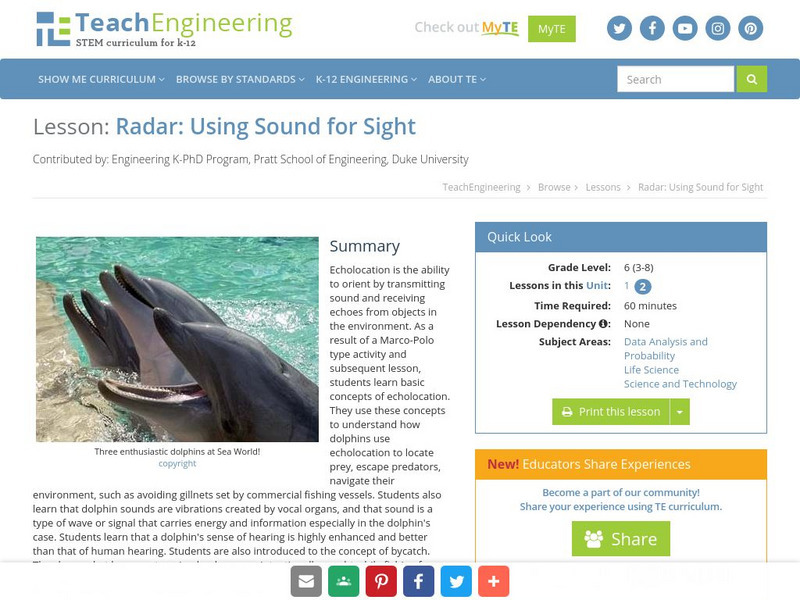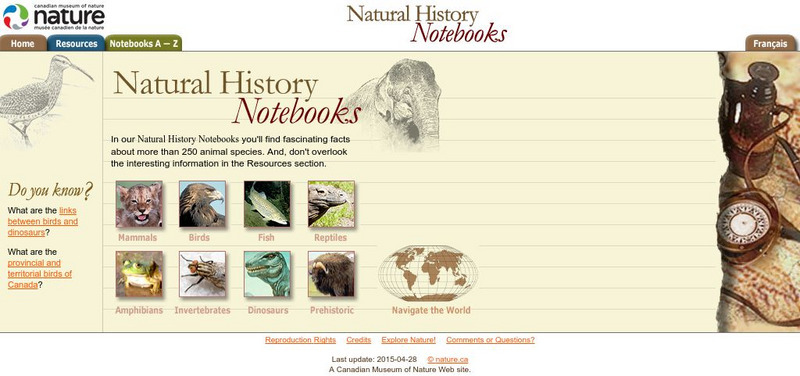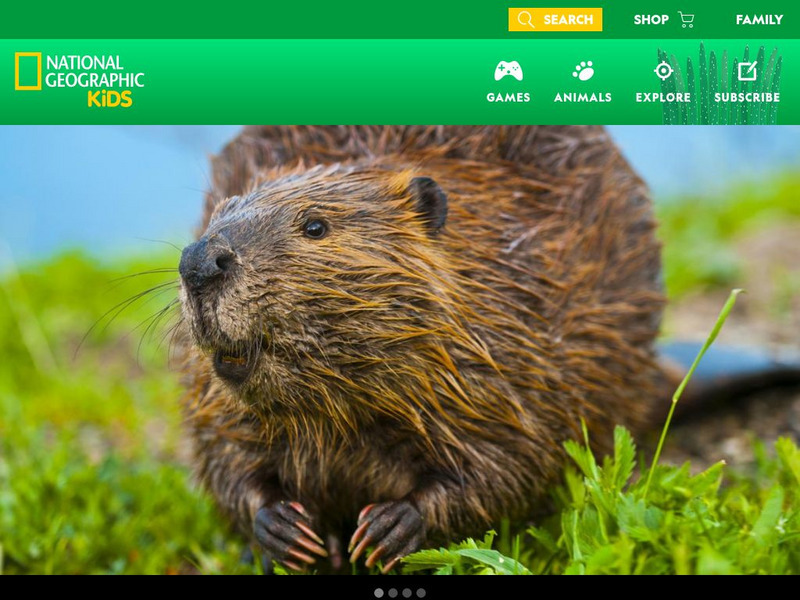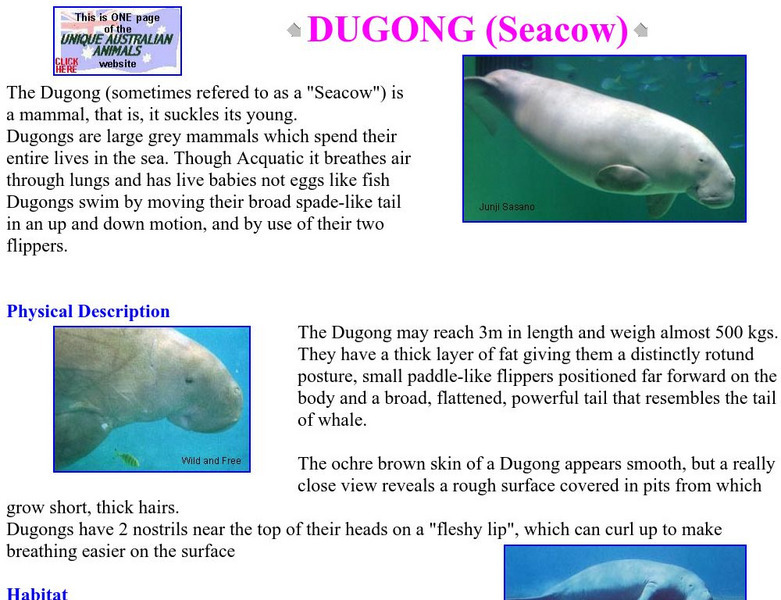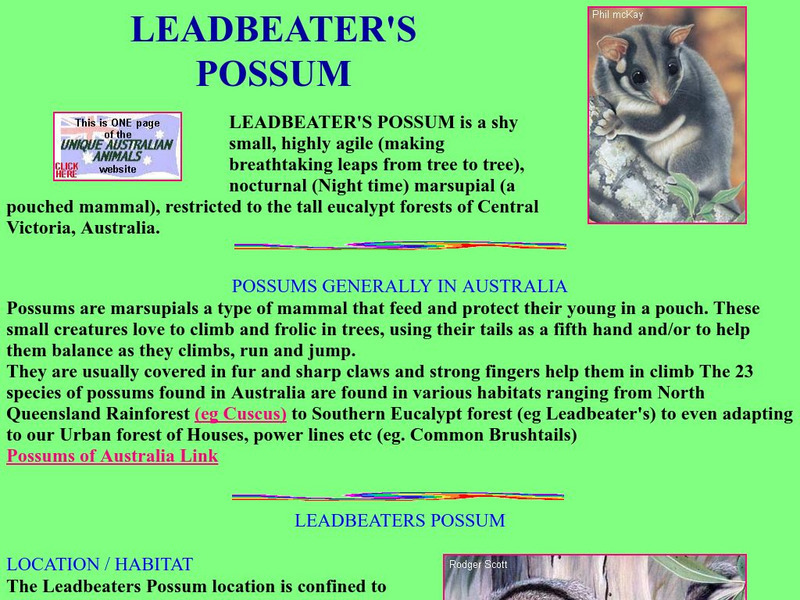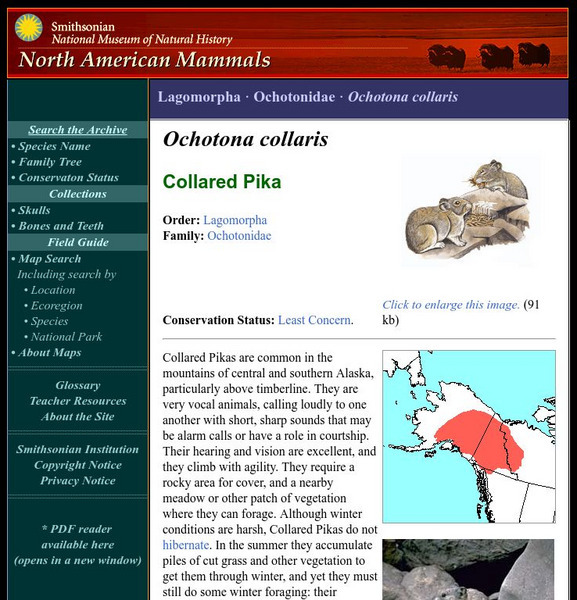Ducksters
Ducksters: Blue Whale for Kids: Learn About the Giant Mammal.
What are blue whales? Kids find out about the largest mammal on earth that lives in the ocean.
Earth Life
Earth Life: Blood
A very good description of the blood and circulatory systems of mammals and the important role that blood plays in the physiology of animals.
Soft Schools
Soft Schools: Animal Classification Game
Decide whether an animal is an amphibian, insect, mammal or reptile with this interactive classification game.
Other
Discovery of Sound in the Sea
Discover how animals use sound to communicate. Provides links to the uses of sound, effects of sound as well as sound production and reception.
Science Buddies
Science Buddies: Harbor Porpoise Movement
In this project you can use archived satellite tracking data to learn about activity patterns of harbor porpoises. How far do they travel? Can you find patterns in the routes individual animals take? Can you correlate their route with...
Sea World Parks & Entertainment
Sea World: Harbor Seals
Outlines the characteristics of the harbor seal, including classification, habitat, behaviors, and conservation. Helps students identify with seals with a list of "Books for Young Readers." Information at a level of upper intermediate or...
Globio
Glossopedia: Seals
Seals are mammals that live parts of their lives on land and other parts entirely in the water. They breed and care for their babies on land, but spend most of their lives in the ocean. This article provides an in-depth look at these...
TeachEngineering
Teach Engineering: Sound for Sight
Echolocation is the ability to orient by transmitting sound and receiving echoes from objects in the environment. As a result of a Marco-Polo type activity and subsequent lesson, students learn basic concepts of echolocation. They use...
Canadian Museum of Nature
Canadian Museum of Nature: Natural History Notebooks
This site from the Canadian Museum of Nature, a natural history museum, provides short information blurbs and fun facts on over 240 different common animals categorized by type (mammals, fish, reptiles, invertebrates, amphibians,...
Smithsonian Institution
National Museum of Natural History: Where Do Mammals Live?: Hyena
A brief illustrated overview of the hyena explains why this animal is such a successful dry-weather scavenger.
Smithsonian Institution
National Museum of Natural History: Where Do Mammals Live?: Wildebeest
Brief illustrated overview of the wildebeest and an accompanying video demonstrate the physical adaptations that allow this animal to eat and digest tough African grasses.
Saint Louis Zoo
Saint Louis Zoo: Cheetah
Learn animal facts about habitat, behavior, speed, and appetite, and most importantly, discover the threats that these amazing animals face today.
Environmental Education for Kids
Eek!: Environmental Education for Kids
This site provides illustrations, descriptions, and species of amphibians, birds, fish, insects, invertebrates, mammals, reptiles, and endangered species.
DLTK
Kid Zone: Animal Classes
A comprehensive and colorful site that lists the various classes of animals with pictures and descriptions.
National Geographic Kids
National Geographic Kids: Animals: Zebras
Click-through facts-and-photo file about zebra characteristics, diet, and habitat. Includes a map of Africa that pinpoints its range and a video that shows zebras in action.
National Geographic Kids
National Geographic Kids: Animals: Hedgehogs
National Geographic provides great information on hedgehogs. Check out the "fun facts," listen to what a hedgehog sounds like, watch a hedgehog in action, or find out where in the world you can find hedgehogs.
National Geographic Kids
National Geographic Kids: Animals: Beavers
Click-through facts-and-photo file about beaver characteristics, diet, and habitat. Includes a map of the countries that pinpoint its range and a video that shows these large rodents in their habitat.
Curated OER
Rainforest Mammals
This commercial site explores the types of animals you can find in the Australian rainforest. Detail information is available down to the species level.
Unique Australian Animals
Unique Australian Animals: Dugong
Unique Australian Animals introduces you to the dugong or sea cow, an mammal that is similar to the manatees found in Florida.
Unique Australian Animals
Unique Australian Animals: Leadbeater's Possum
Unique Australian Animals profiles the marsupial mammal Leadbeater's possum with photos and text.
Unique Australian Animals
Unique Australian Animals: Sugar Glider
Sugar Glider, scientifically called Petaurus breviceps, is a small arboreal gliding possum, and a type of marsupial mammal.
Unique Australian Animals
Unique Australian Animals: Tasmanian Devil
The Tasmanian devil is a real Australian marsupial mammal and nothing like the cartoon character as you will find out in this illustrated article.
Unique Australian Animals
Unique Australian Animals: Platypus
The duck-billed platypus of eastern Australia is one of two mammals that bear their young in eggs. This illustrated article features many facts and photographs about this intriguing animal.
Smithsonian Institution
National Museum of Natural History: American Mammals: Collared Pika
Collared Pikas are common in the mountains of central and southern Alaska, particularly above the timberline. They are very vocal animals, calling loudly to one another with short, sharp sounds that may be alarm calls or have a role in...
Other popular searches
- Classify Animals and Mammals
- Australian Animals Mammals
- Science Animals Mammals
- Animals Mammals Activities
- Animals Mammals Reproduction









